Stories & Songs | STORIES OF DREAMERS & THE LAND
Dreamers are bringing songs here from heaven. Over here, the Dreamers are singing. They capture the song, just like this recording.
Charlie Yahey, 1966
This is a collection of all the stories about our Dreamers and our land presented in this web exhibit. Please watch and learn about our culture, our relationship to our land, our struggle to assert our Aboriginal and Treaty Rights, and our work to revitalize our traditions.
ABOUT THE PROJECT
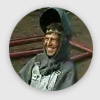
Johnny Oker and Gerry Attachie, talking about the Doig River Rodeo, 2000.
Johnny Oker and Gerry Attachie talk about the Doig River Rodeo, followed by images of Doig River Rodeo Grounds, some archival images, and contemporary images of the rodeo and community members.
PLACES

Billy Attachie, talking about the Dreamer Nááchįį/Oker, 2005.
Billy Attachie talks about the Dreamer Nááchįį/Oker, who lived and died at Alááʔ S̱atǫ (Petersen's Crossing). Alááʔ S̱atǫ, 2005.
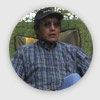
Sam Acko, telling a Dane-zaa story of The Man Who Turned Into A Moose, 2005.
![]() Click to Watch - Flash Format
Click to Watch
Click to Watch - Flash Format
Click to Watch
Sam Acko talks about the importance of Madáts'atl'ǫje (Snare Hill) to Dane-zaa people in "survival times," when moose were scarce. He also tells a traditional Dane-zaa story about a man who transformed into a moose. Madáts'atl'ǫje (Snare Hill), 2005.

Tommy Attachie, talking about the impact of industrialization on Dane-zaa lands. July, 2005
Tommy Attachie, sitting in front of an oil well in the Madáts'atl'ǫje (Snare Hill) area, talks about how the landscape has changed since he spent time here as a boy in 1958. He describes the impact that the forestry and oil and gas industries have had on the Dane-zaa landscape and Dane-zaa culture. The footage of oil wells and industrial damage to Dane-zaa lands was filmed by Stacy Shaak, Robin Ridington, and Kate Hennessy between 2001 and 2006. The piece was edited by Kate Hennessy and Malcolm Levy, 2006.

Tommy Attachie, telling about Dane-zaa people and Dreamers gathering at Sweeney Creek, 2005
Tommy Attachie remembers Dane-zaa people and Dreamers gathering at Sweeney Creek. He tells the story of the Dreamer Gaayęą dreaming the "Prairie Chicken Song" at Sweeney Creek, 2005.

Tommy Attachie, talking about the Dreamer Makéts'awéswąą at Sweeney Creek, 2005.
Tommy Attachie talks about the Dreamer Makéts'awéswąą, who is said to have become a Dreamer at Sweeney Creek after dying for nine days and then coming back to life.

Margaret Attachie, talking about camping at Sweeney Creek in her youth. Doig River, 2005.
Margaret Attachie talks about camping at Sweeney Creek in her youth. She recalls tanning hides and doing beadwork there and trading it for groceries and supplies. Doig River, 2005.
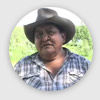
Tommy Attachie talking about the Dreamer Alédzé, 2005.
Tommy Attachie talks about the Dreamer Alédzé, who is buried at Alédzé Tsáá, and the ways that Dane-zaa Dreamers have predicted the future. He also talks about travelling and camping in the area, and surviving a flu epidemic centred around Fort St. John by returning to places like Alédzé Tsáá. Alédzé Tsáá, 2005.
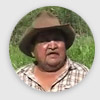
Tommy Attachie, telling about the death of the Dreamer Adíshtl'íshe at Ts̱azuulh Saahgáe (Big Camp) in 1919, 2005.
Tommy Attachie talks about the big Dane-zaa camp at Ts̱azuulh Saahgáe. He also tells about the death of the Dreamer Adíshtl'íshe at Ts̱azuulh Saahgáe in 1919. Ts̱azuulh Saahgáe (Big Camp), 2005.

Billy Attachie, talking about the Dreamer Nááchįį (Oker). Nętl'uk, 2005.
Billy Attachie talks about the Dreamer Nááchįį (Oker) and other Dreamers from Alberta who travelled through this area. Nętl'uk (Osborne River).
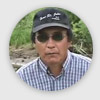
Sam Acko, telling a story about Tsááyaa and Mosquito Man. Nętl'uk (Osborn River), 2005.
Sam Acko tells a Dane-zaa story about Tsááyaa and Mosquito Man. Sam describes the story as taking place on a river like the Osborne. Nętl'uk (Osborne River), 2005.
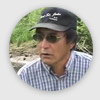
Sam Acko, sharing a story about the origin of the Dane-zaa place name Nętl'uk. Nętl'uk (Osborn River), 2005.
Sam Acko tells about the origin of the Dane-zaa place name Nętl'uk for this area around the Osborne River. Nętl'uk (Osborne River), 2005.

Tommy Attachie, talking about the Dreamer Gaayęą. Suunéch'ii Kéch'iige (Montney), 2005.
Tommy Attachie talks about the Dreamer Gaayęą at Gat Tah Kwą̂, the former Montney Reserve, and about Dane-zaa gatherings at "The Place Where Happiness Dwells" located there. Gat Tah Kwą̂ (Montney), 2005.
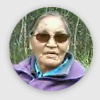
May Apsassin, talking about Dane-zaa oral tradition and Beaver language revitalization. Suunéch'ii Kéch'iige (Montney), 2005.
May Apsassin talks about Dane-zaa oral tradition, how stories are passed down through the generations, and the importance of revitalizing the Dane-zaa/Beaver language. She laments that while there used to be a lot of people at Gat Tah Kwą̂ (Montney), there are now few elders left in the community. Gat Tah Kwą̂ (Montney), 2005.
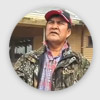
Chief Gerry Attachie, describing how he and the band won compensation for the loss of IR-172, the former Montney Reserve. Hanás̱ Saahgéʔ (Doig River), 2005.
Gerry Attachie describes how he and the band successfully negotiated compensation for the loss of their reserve, IR-172, at Gat Tah Kwą̂ (Montney). He talks about how the Band's administrative and cultural centre was built with this money, and his hope for the survival of the Dane-zaa/Beaver language. Doig River First Nation Cultural Centre, 2005.
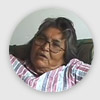
Madeline Davis, telling about Dreamers Dances at Suunéch'ii Kéch'iige (Montney). Doig River, 2005.
Madeline Davis tells about attending a Dreamers Dance at Gat Tah Kwą̂ (Montney) when she was a little girl. She recalls watching the Dreamer Nááchę (John Notseta) showing maps of Heaven to the people who had gathered there to dance, sing, socialize and tell stories. Hanás̱ Saahgéʔ (Doig River), 2005.
A DREAMER'S DRUM
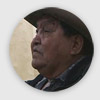
Tommy Attachie, talking about the significance of the Dreamer Gaayęą's drum.
Tommy Attachie speaks in Beaver at a project planning meeting. He connects the Dreamer Gaayęą's drum to Dane-zaa dreaming, hunting, and oral traditions, using these principles to direct the project team to document the material you see throughout this website. Doig River First Nation Cultural Centre, 2005.

Mark Apsassin, talking about his life and his interpretation of the Dreamer Gaayęą's Drum. Doig River, 2005.
Mark interprets the drawings on the Dreamer Gaayęą's drum and relates their symbolism to his present experience. Doig River First Nation Rodeo Grounds, 2005.
DREAMERS & THE LAND

Tommy Attachie, recalling how he learned to drum and sing. Doig River Museum, 2005.
Tommy Attachie talks about growing up in the Hanás̱ Saahgéʔ (Doig River) area and about learning how to drum and sing the Dreamers' songs. Doig River First Nation Museum, 2005.
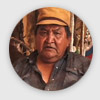
Tommy Attachie, telling about Dane-zaa Dreamers and the Tea Dance. Doig River Museum, 2005
Tommy Attachie talks about Dane-zaa Dreamers (Prophets), and their connections to Christianity. He also talks about the significance of the Dane-zaa Tea Dance (also known as the Dreamers' Dance). Doig River First Nation Museum, 2005.

Chief Gary Oker teaching about Dane-zaa drumming and the Dreamers Dance. Excerpt from the video; Contact the People, ©2001 Doig River First Nation.
In this excerpt from the video Contact the People (2001), Chief Gary Oker talks about Dane-zaa drumming traditions and Dreamers' Dances. Doig River First Nation Rodeo and Cultural Grounds.
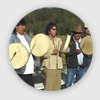
Doig River Drummers perform for community members and Crown negotiators. Doig River, 2005.
Doig River Drummers Jack Askoty, Brian Acko, Gary Oker, Tommy Attachie and Eddie Apsassin sing three songs to welcome Treaty Land Entitlement (TLE) negotiators and community members to a barbeque. Doig River First Nation Cultural Centre, 2005.
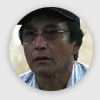
Sam Acko, talking about the revitalization of drum-making and singing traditions at Doig River. Hanás̱ Saahgéʔ (Doig River), 2005.
Sam Acko explains how drum making traditions at Doig River were almost lost. He recalls how he started making drums again and was able to continue the tradition of drumming, and singing. Doig River First Nation Cultural Centre, 2005.

Tommy Attachie, telling a story about the Dreamer Azáde. Doig River Museum, 2005.
Tommy Attachie telling a story about the Dreamer Azáde. Doig River First Nation Museum, 2005.

